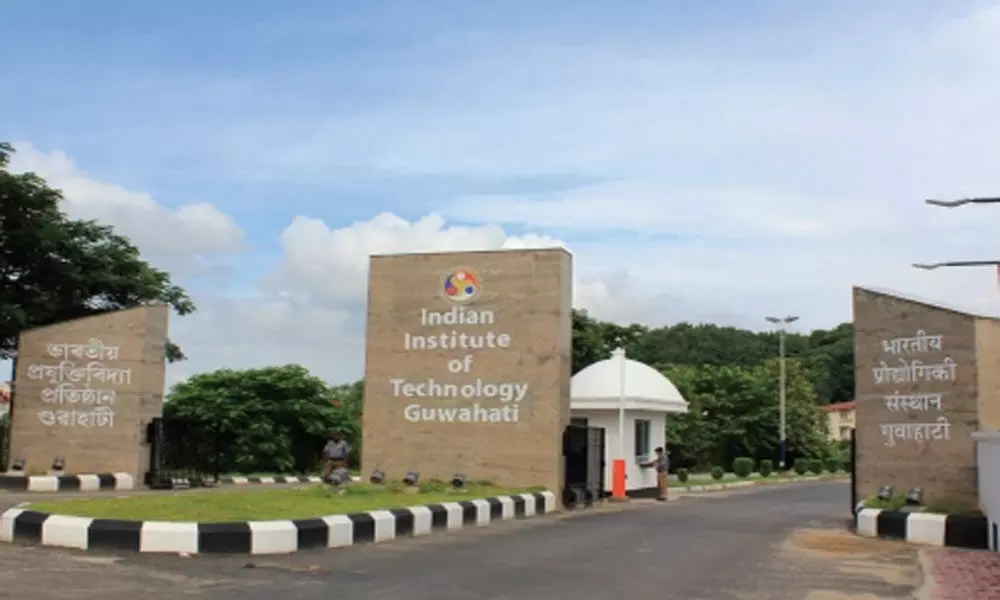Live
- Antimicrobial resistance awareness programmes held
- BJP celebrates victory in Maharashtra Assembly polls
- BJP gets shot in the arm ahead of Delhi polls
- Mahayuti’s Maha win
- Passed exam of democracy: Soren
- Politics of lies defeated: Modi
- Ruling parties hold sway in bypolls
- Returnable plots allotted to Amaravati farmers
- Godavari to quench Hyderabad thirst
- Nov 30 last date for submissions for Governor’s Award
Just In

The Indian Institute of Technology, Guwahati (IIT-G) on Wednesday said its researchers have developed a paper-based sensor that can make assessment of the freshness of milk by a simple method and instantaneous.
Guwahati , The Indian Institute of Technology, Guwahati (IIT-G) on Wednesday said its researchers have developed a paper-based sensor that can make assessment of the freshness of milk by a simple method and instantaneous.
Bacteria and other microbes that can grow in milk can not only affect the taste and freshness, but can also result in health issues.
Pasteurisation is commonly used to kill the microbes in milk and various tests are used to ensure the effectiveness of pasteurisation.
Commonly used tests such as the methylene blue test, are time consuming; it could take many hours for colour changes to indicate presence and absence of microbes.
Commercial phenol-based tests require sophisticated spectrophotometers and involve multistep procedures, which necessitates dedicated testing centres and skilled personnel.
"It would be useful if the quality of milk can be tested at the point of collection of milk or even in the home kitchen, such testing requires easy-to-operate and portable detection kits," said Pranjal Chandra, Assistant Professor, Department of Biosciences and Bioengineering, IIT Guwahati .
Alkaline Phosphatase (ALP) is a metalloprotein found naturally in raw milk samples and is considered an important biomarker in quality control of milk. It is found in raw milk and is destroyed during pasteurisation.
Detection of ALP in milk can thus point to inadequate pasteurisation and perhaps contamination.
"Despite ALP's recognisable detection potential in native milk, the multistep nature, and requirement of sophisticated bulky analytical instruments and trained personnel, to detect ALP, limit their use as a sensor of milk quality in remote settings and in home kitchens," Chandra added.
The researchers have used simple filter paper, chemically modified it, and loaded it with a recognition element anti-ALP, which captures the ALP present in the milk.
Upon treatment of the colour forming compound BCIP to the captured complex of ALP forms a blue-green coloured precipitate, that otherwise does not gives any colour in the absence of ALP.
The intensity of the colour indicates the amount of ALP present. The team used a smartphone to capture the image of the colour and used the RGB (Red Green Blue) filter in the phone to profile the colour obtained, which could be co-related to the concentration of ALP present in the test sample.
"Our sensor takes merely 13 min to detect ALP, and hence it can be applied for quick onsite analysis," Chandra said.
The researchers successfully tested milk obtained from villages and commercially available milk samples using their paper-based sensor kit, and found that they could detect down to 0.87 units of ALP per millilitre of milk to about 91-100 per cent accuracy.
This detection limit and accuracy make it possible to discriminate raw milk (often contains as high as 191U/mL ALP) from boiled milk which contains ALP in ultra-trace amount.
Based on the detection principle, the team has also developed a miniaturised detection kit and demonstrated the instrument-free, in-kitchen applicability of the kit for milk monitoring.
They have developed another sensor for ALP detection using a label-free bio-electronic chip.
"The developed bio-electronic chip is an advanced version of the paper-based kit with improved accuracy", said Chandra.

© 2024 Hyderabad Media House Limited/The Hans India. All rights reserved. Powered by hocalwire.com






